Technology
Apple iPhone 16 vs. Samsung Galaxy S24: Which is best?
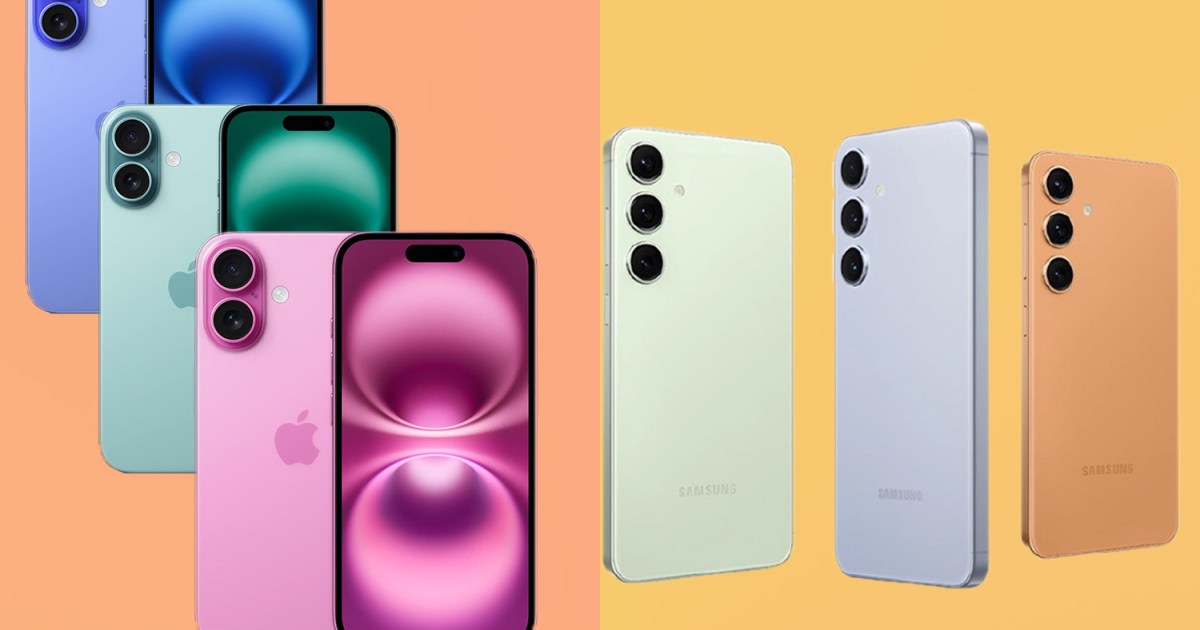
Apple recently released the iPhone 16, almost nine months after Samsung unveiled the Galaxy S24 series. Although these phones are similar in many ways and are the cheapest in their flagship ranges, they run on different operating systems. How do these two phones compare in other aspects? Is one better than the other? Which one is the superior choice based on your preferences?
Let’s compare the two phones and find out which one suits you better.
Apple iPhone 16 vs. Samsung Galaxy S24: specs
| Apple iPhone 16 | Samsung Galaxy S24 | |
| Dimensions and weight | 5.81 x 2.82 x 0.31 inches
6.0 ounces |
5.79 x 2.78 x 0.30 inches
5.93 ounces |
| Display | 6.1-inch Super Retina XDR display
1179 x 2556 resolution (460 PPI) 60Hz refresh rate 2,000 nits peak brightness 1 nit minimum brightness |
6.2-inch FHD+
1080 x 2340 resolution (416 PPI) 120Hz refresh rate 2,600 nits peak brightness 1 nit minimum brightness |
| Processor | A18 chip
Six-core CPU Five-core GPU 16-core Neural Engine |
Qualcomm Snapdragon 8 Gen 3 for Galaxy
Eight-core CPU Number of GPUs not announced by Qualcomm Hexagon Processor |
| Rear cameras | Dual camera system
48-megapixel Fusion main 12MP ultrawide |
Triple camera system
50MP main 12MP ultrawide 10MP telephoto |
| Front cameras | 12MP selfie | 12MP selfie |
| Storage and memory | 8GB/128GB
8GB/256GB 8GB/512GB |
8GB/128GB
8GB/256GB |
| AI | Apple Intelligence (coming soon) | Galaxy AI |
| Durability | IP68 | IP68 |
| Software and support | iOS 18
Six to eight years of software updates |
Android 15
Seven years of software updates |
| Battery and charging | Up to 22 hours between charges
Unknown battery size 45W wired 30W wireless 4.5W reverse wireless |
Up to 24 hours between charges
4,000mAh 25W wired 15W wireless 4.5W reverse wireless |
| Colors | Ultramarine
Teal Pink White Black
|
Cobalt VioletAmber Yellow
Marble Gray Onyx Black Jade Green (Samsung exclusive) Sapphire Blue (Samsung exclusive) Sandstone Orange (Samsung exclusive) |
| Price | Starting at $800 | Starting at $800 |
| Review | 4 out of 5 stars | 4 out of 5 stars |
Apple iPhone 16 vs. Samsung Galaxy S24: design and display

At first glance, at least on the front, there isn’t much difference between the Samsung Galaxy S24 and the Apple iPhone 16. Both have rounded edges and similar aluminum bodies. The Galaxy S24’s display is a tad larger at 6.2 inches compared to the iPhone 16’s 6.1 inches, and you’ll notice two new buttons on the Apple phone (more on that below).
When turned on, the displays reveal more distinctions. Samsung’s phone offers a higher refresh rate and peak brightness, while the Apple device provides a sharper resolution. Both phones have the same minimum brightness, just 1 nit, which is fantastic in lowlight conditions.
The Galaxy S24 is protected by Gorilla Glass Victus 2 on both the front and back, while the iPhone 16 features a Ceramic Shield front and a color-infused glass back. Both phones offer IP68 protection, making them dustproof and water-resistant up to 6 meters for 30 minutes.
The most important point that stands out regarding the displays is the refresh rate for each handset. In 2024, it’s embarrassing that the iPhone 16 (and iPhone 16 Plus), like previous models, is stuck at 60Hz, versus the 120Hz on the iPhone 16 Pro and Galaxy S24 series. A higher refresh rate provides a smartphone experience that is more visually pleasing, responsive, and comfortable, which is most noticeable during gaming. (The iPhone 17 is expected to offer a 120Hz refresh rate — finally.)
The Galaxy S24 features three familiar buttons: a side key and two for volume. The side key turns the screen on and off or locks the device, while the volume buttons allow you to control media, calls, and notifications.
The iPhone 16 also includes a side button for on or off functionality and volume up and down buttons. New to this model is a Camera Control button, which offers enhanced control of the phone’s Camera app during photo or video capture. This includes access to features such as zoom, focus, and exposure. The iPhone 16 also now has the Action button, a versatile and customizable feature first seen in the iPhone 15 Pro series. This button can be programmed to execute various simple and complex actions, enhancing the phone’s functionality and personalizing it to suit individual preferences.
Design is always a tough category to call, because so much of it is personal. The Camera Control button is a game-changer, but the 60Hz refresh rate really does hold the iPhone back. We’re giving this to the iPhone, largely because 60Hz on an iPhone doesn’t generally feel slow, and because the Camera Control button is very good.
Winner: Apple iPhone 16
Apple iPhone 16 vs. Samsung Galaxy S24: performance and software

The Galaxy S24 is powered by the Qualcomm Snapdragon 8 Gen 3 for Galaxy, a customized version of the Snapdragon 8 Gen 3 specifically designed for Samsung devices to deliver improved performance and efficiency. Our tests showed that the Galaxy S24 is fast and capable of handling everyday tasks without lag or stuttering. However, when taking many photos quickly, the phone became warm, although it never got too hot to hold.
The iPhone 16 is equipped with the all-new A18 chip, which Apple claims offers an improved CPU speed of up to 30% and 40% faster GPU performance compared to the A16 chip found in the iPhone 15. Despite these significant improvements, we did not notice substantial performance enhancements during our tests, possibly because the regular iPhones were already very fast.
However, the iPhone 16 includes an A18 chip, which will support Apple Intelligence (see below) when it’s released; the iPhone 15 did not.
The iPhone 16 runs iOS 18, and the Galaxy S24 includes Android 14. Your preference will likely come down to personal experience at this stage. But if you don’t have a choice, don’t worry. While they still have their differences, iOS and Android are generally quite similar these days, and it won’t take you long to find your footing when switching from one to the other. Apple usually offers iPhone users six to eight years of iOS updates, while Samsung has confirmed that Galaxy S24 users will receive seven years of Android updates.
It’s a tough category to call. The newer Apple phone has the edge in pure power, but whether that means a smoother experience is difficult to gauge because there are too many variables to consider.
Winner: Apple iPhone 16
Apple iPhone 16 vs. Samsung Galaxy S24: cameras

We’ve tested the camera systems on both phones. Overall, they offer mixed results.
First, it’s important to note that the Galaxy S24 has a triple rear camera system, while the iPhone 16 offers a dual camera system. The former offers a 50-megapixel main, 12MP ultrawide, and 10MP telephoto, while the latter provides a 48MP Fusion main and 12MP ultrawide. On the front, both have a 12MP selfie camera.
Our Galaxy S24 camera system test mainly yielded positive results. In the past, Samsung devices have been known for producing oversaturated colors in photos. However, thanks to improved algorithms governing color representation, the images now tend to be more accurate to life. Overall, images were much better when there was no movement when taking a shot. Otherwise, it can mean a blurry picture. Close-up shots with the Galaxy S24 were good, and the selfie camera was “just” decent.
The iPhone 16 features a 48-megapixel primary camera with 2x optical zoom, a 12MP ultrawide camera, and a 12MP selfie camera, similar to the iPhone 15. However, there are some significant changes.
The new iPhone introduces autofocus for the ultrawide camera, allowing macro photography and enabling the capture of spatial photos for viewing on an Apple Vision Pro. Additionally, the primary camera now has an anti-reflective lens coating and can capture pictures with zero shutter lag, a feature previously exclusive to Pro iPhones.
In our tests, the primary camera captured detailed photos with pleasing colors. The ultrawide camera performed well, though not exceptionally, and taking macro photos was enjoyable. The selfie camera on the iPhone remained as reliable as ever.
The standout feature across the entire iPhone 16 lineup is the physical Camera Control button on the phone’s right side, just below the power button. Pressing this button activates the Camera app, and a single press takes a photo while pressing and holding it records a video.
Additionally, the Camera Control has a capacitive sensor on its top. A light double press on the Camera Control, while the camera is open, activates a new UI for selecting various camera controls such as exposure, zoom, and styles. You can slide your finger across the Camera Control to cycle between them, lightly press the button to select one, and then slide your finger again to adjust the chosen control.
While this may present a learning curve, it’s a fun, new experience that shouldn’t take long to figure out. Furthermore, Apple Intelligence is adding more features.
Winner: iPhone 16
Apple iPhone 16 vs. Samsung Galaxy S24: battery and charging

The Samsung Galaxy S24 has a 4,000mAh battery intended to last a full day with regular use; however, we could use more than a day on a single charge. On a down note, the basic Galaxy S24 model only supports charging speeds of up to 25 watts, unlike its larger counterparts, the Galaxy S24 Plus and Galaxy S24 Ultra, which support 45W charging.
On the wireless front, the Samsung phone does not support the new Qi2 wireless charging standard. Wireless charging is still possible but is limited to 15W, which may be slow. The phone also features reverse wireless charging, with a speed of up to 4.5W.
The iPhone 16 has a 4,685 mAh battery, allowing you to use the phone throughout the day without recharging. The standard iPhone 16 series now supports MagSafe charging up to 25W, an improvement from the previous 15W. In addition to MagSafe, the iPhone 16 also supports Qi2 and Qi wireless charging and 4.5W reverse wireless charging, similar to the previous model.
In our tests using an Anker 747, the iPhone 16 charged from 5% to 60% in approximately 30 minutes, and it took 90 minutes to reach 100%. While charging from a low or dead battery to around 70% is quick, the final 30% takes longer.
The Samsung Galaxy S24 and the iPhone 16 have strong batteries, but neither is exceptional, which is expected as they are the more affordable flagship models from their respective companies. Therefore, we consider this a tie.
Winner: iPhone 16
Apple iPhone 16 vs. Samsung Galaxy S24: AI

When history is written, this year’s smartphones will be remembered for being among the first to embrace artificial intelligence. The Galaxy S24 includes Galaxy AI, while the iPhone will eventually include Apple Intelligence. When discussing either of these products, it’s important to note they are both works in progress, especially in the case of Apple Intelligence, which has not yet been released.
Galaxy AI brings a range of advanced AI capabilities directly to Galaxy smartphones and tablets. It aims to provide intelligent and personalized experiences while enhancing the functionality of various features. These include an enhanced user experience, improved functionality, privacy and security, and offline accessibility.
Apple Intelligence, which the company revealed at the Worldwide Developers Conference (WWDC) in June, will eventually be found on every Apple product. It’s a suite of AI features designed to enhance productivity, creativity, and the overall user experience. It combines on-device and server-side processing to deliver powerful AI capabilities while prioritizing user privacy.
Apple Intelligence features will initially be divided into three broad categories: photo and video editing, writing, and contextural suggestions or automation.
The iPhone 16 series comes with iOS 18, which does not include Apple Intelligence. You will have to wait for iOS 18.1 and iOS 18.2 to be released later this year to access it. However, not all Apple Intelligence components will be available on the iPhone 16 series even after these updates arrive, as full releases might extend into 2025.
As an iPhone 16 buyer, you are promised to be among the first to experience the new tools, but since the biggest new features aren’t ready yet, this has to go to the Samsung phone.
Winner: Samsung Galaxy S24
Apple iPhone 16 vs. Samsung Galaxy S24: price and availability
The starting price for each phone is $799, which includes 128GB of storage. For $859, you can get the Galaxy S24 with 256GB. The 256GB iPhone 16 model from Apple is priced at $899. Unlike Samsung, Apple offers a 512GB storage option for $1.099.
Availability is strong for both of these phones, as they’re some of the most popular phones on the planet. Walk into anyplace that sells phones and you’re going to be able to find these.
Apple iPhone 16 vs. Samsung Galaxy S24: verdict

When deciding between the Galaxy S24 and iPhone 16, your choice may depend on whether you prefer Android or iOS. If you don’t have a strong preference for either operating system, the iPhone 16 is the better option. Historically, new iPhones released in the fall tend to outperform Galaxy S models released earlier in the year, and this pattern continues with the latest models.
While the Galaxy S24 might be available at slightly lower prices due to being slightly older, the iPhone 16 offers some advantages, such as access to 512GB of storage. Despite the price difference, the iPhone 16 stands out with its design, performance, camera, software, and additional hardware features like the Action button and Camera Control. Overall, the iPhone 16 is the preferred choice over the entry-level Galaxy S24.
Technology
Google's new quantum computer may help us understand how magnets work
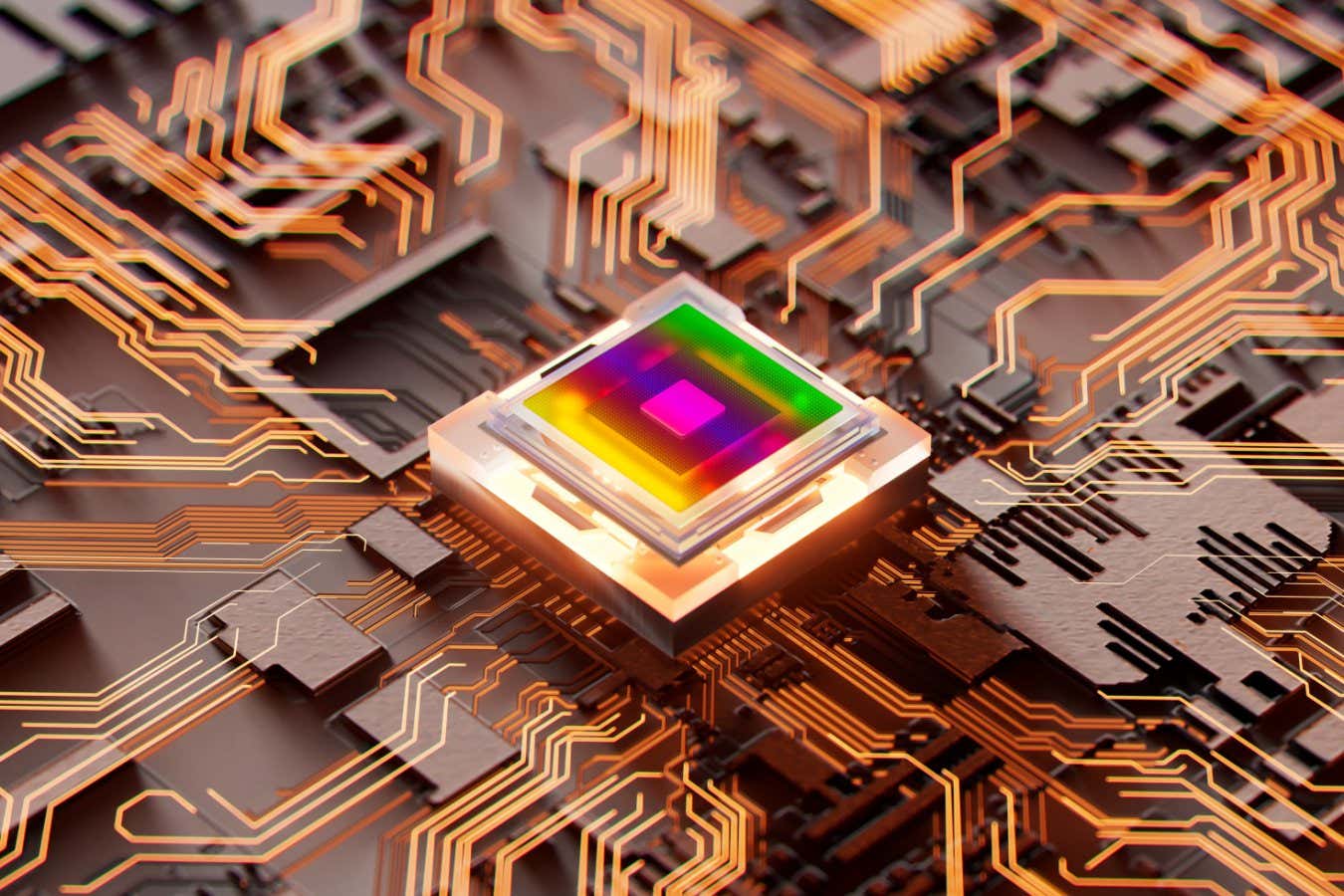
By combining two approaches to quantum computing into one device, Google has been able to simulate the behaviour of magnets in detail – and found discrepancies with our current understanding of certain magnet systems
Servers computers
1U Server Rack Shelf – SHELF-1U-20-FIXED-S | StarTech.com
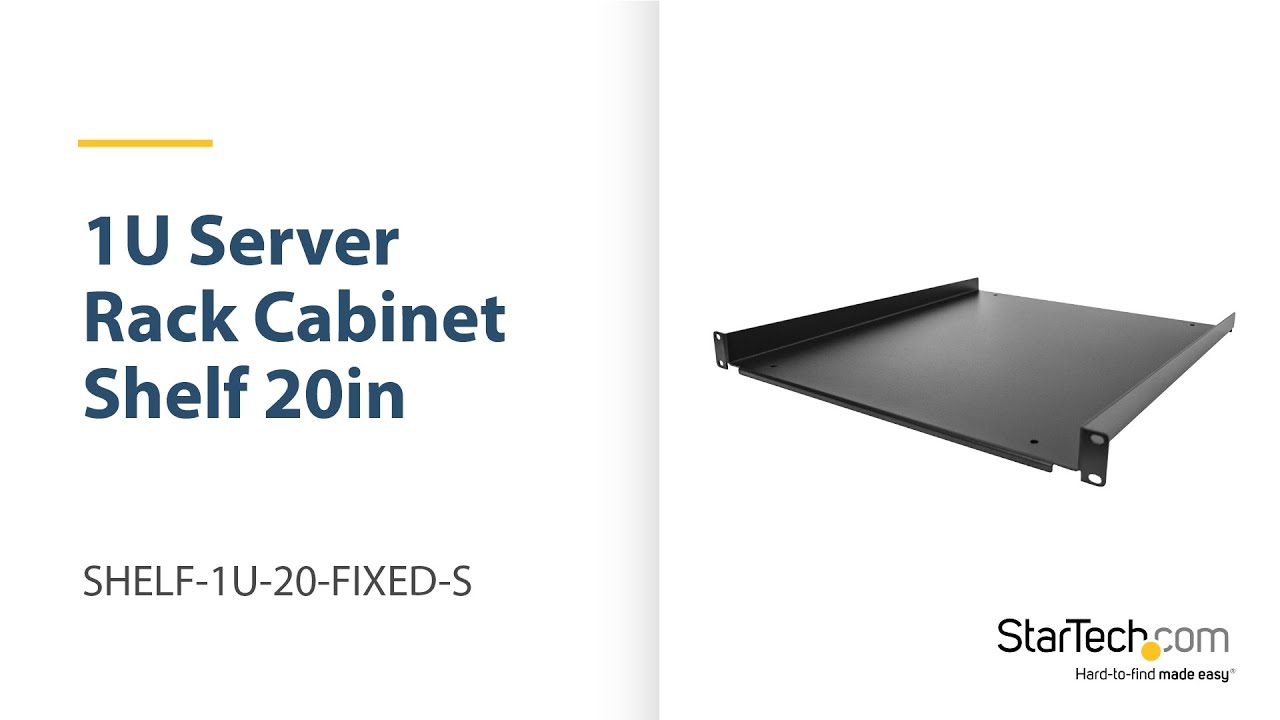
The SHELF-1U-20-FIXED-S lets you add a 1U 20 inches (50.8 cm) deep shelf to any EIA-310 compliant 19-inch rack or cabinet.
source
Technology
TCL Prime Big Deal Days TV deals: TVs from $115
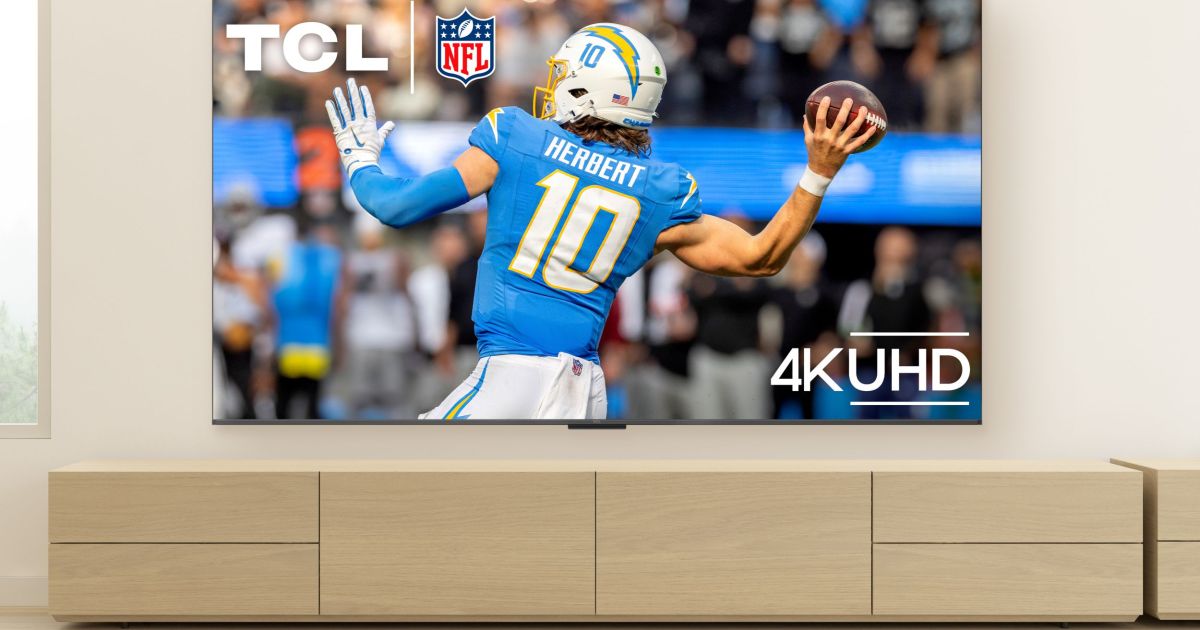
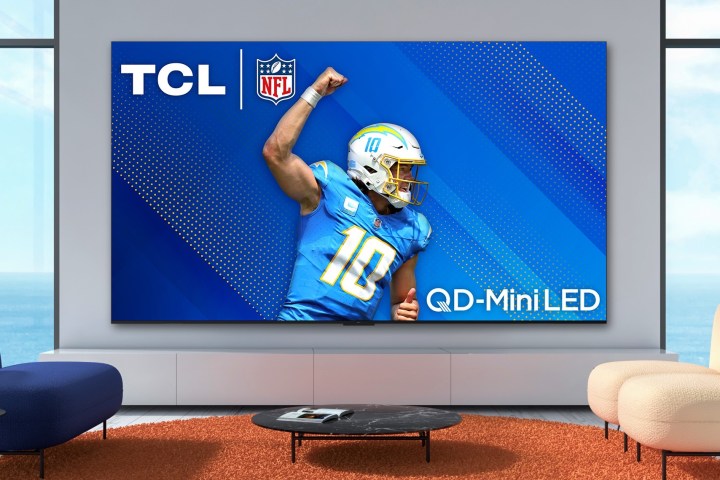
Update 09/30/24: As we begin covering the upcoming October Big Deal Days event from Amazon (October 8 and 9), we’re once again reminded that you can find many budget, yet quality, TVs from TCL that average viewers love. Right now, we’re just getting started, catching the first items that hit sales, and are excited to see how this space develops.
October Big Deal Days are approaching, meaning great deals from Amazon (who is the originator of the event) and other retailers trying to get a slice of the pie. While the best Big Deal Days deals are varied, covering everything from computers to furniture, we’re also finding plenty of good deals in niche categories to cover them by themselves. For example, we found enough to create an entire listing of Best Buy Big Deal Days TV deals in case you want to take advantage of your membership there, while we were also able to create an entire curated selection of Dell Big Deal Days deals if you like the brand. Here, we’re giving TCL the same treatment. The following are quality deals on products from the already budget TV brand.
TCL 32-inch Class 3-Series 1080p Roku TV — $115 $128 10% off
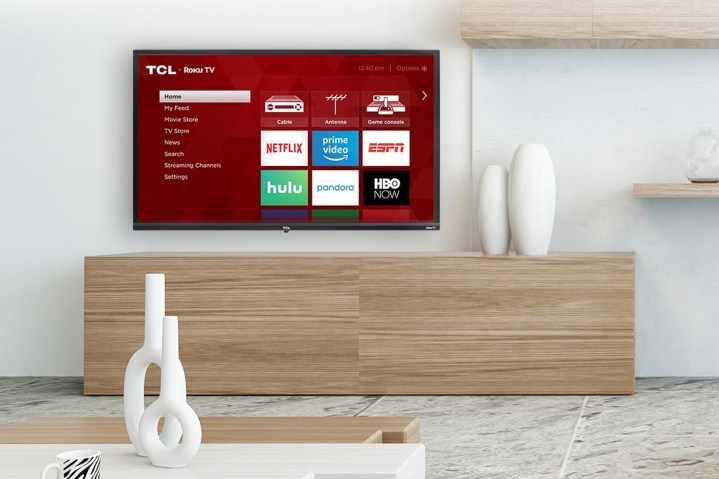
This is the kind of TV that you compare to a tablet not a normal TV. Why? It’s just 1080p and rather small. But imagine getting a smart screen that’s 32 inches diagonal to diagonal for just $115. It’s really difficult to picture, especially after comparing to the best tablet deals. If this is for you, you know who you are.
TCL 50-inch Class 4K Google TV — $198 $228 13% off
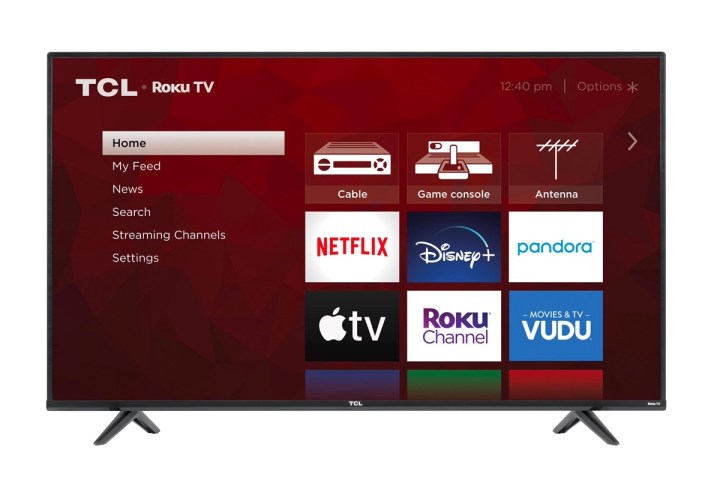
This is a cheap 4K TV with everything you need to enjoy it. It doesn’t have OLED or QLED tech, but it does have HDR, meaning there’ll be a slight color boost but not the brightness and contrast levels you could expect from a TV that cost 10X more. For the price, it really can’t be beat.
TCL 55-inch Class F-35 Series 4K Fire TV — $260 $330 21% off

A 2024 model with a hefty discount. This low-cost TV provides ALLM for low latency gaming, personal Bluetooth audio, DTS:X, and HDR10. It even has an enhanced dialogue mode for better voice clarity to make everything pop, even in movies and show with intense atmospheric sound.
TCL 65-inch Class S4 S-Class 4K Google TV — $360 $400 10% off
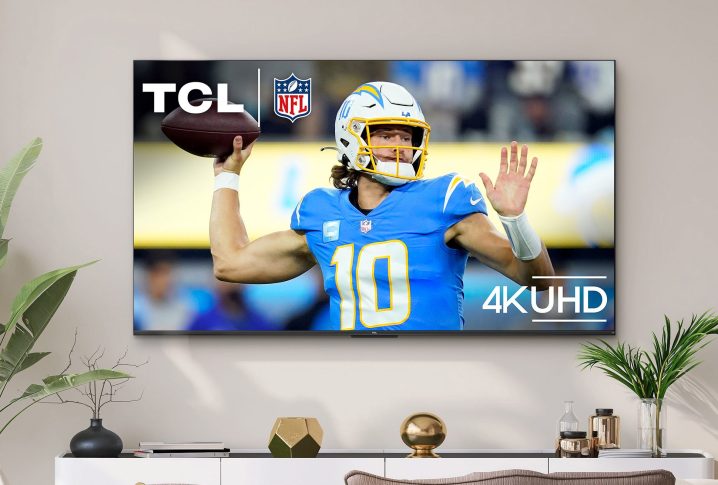
Despite the price, this TV has pretty much all of the features that you’ll need to be proud of a TV pick. It has ALLM for low input lag gaming, HDR PRO, motion rate 240 for great motion clarity, and even personal Bluetooth audio should you need it.
TCL 55-inch Class Q7 Q-Class QLED 4K Google TV — $500 $600 17% off

This TV is not for TV enthusiasts, at least according to our TCL Q7 QLED review. Luckily, it doesn’t have to be. It’s good for great contrast and gaming, but the nitty gritty that enthusiasts pay attention to might be lacking. To put it into perspective, our reviewer (Caleb Denison) imitated a potential average reader saying, “Man, that Caleb guy sure was going on about nothing. This TV looks great!” And at $500 you’ll likely agree.
TCL 75-inch Class Q6 Q-Class 4K QLED Google TV (2024) — $748 $1,100 32% off
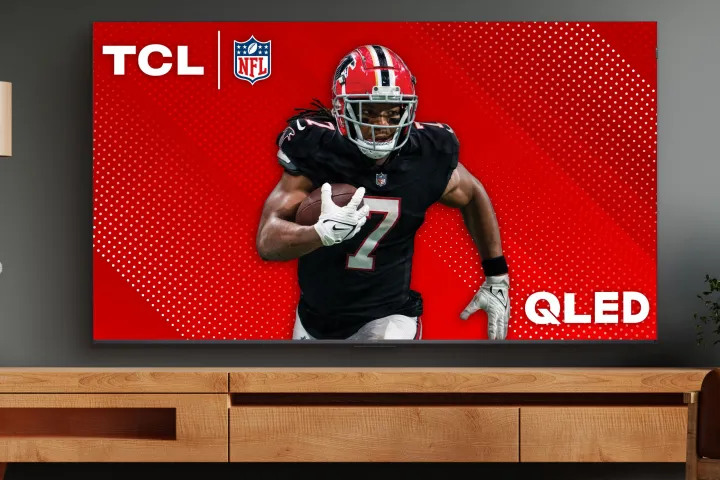
Nearly a third off, a 2024 TV, QLED backlighting tech, and a huge 75 inch body. If it weren’t TCL, you would be expecting to pay a lot more for these stats, but right now it is a mere $748 if you pick it up while the deal lasts.
TCL 55-inch Class QM7 Mini LED Google TV (2024) — $700 $800 13% off

If you are interested in getting a mini-LED TV and, at the very least, trying it out for a spin, this is the deal to pick up. Bigger and higher quality mini-LED TVs will typically run at least a $1,000, after all, and this one usually runs $800. This is an excellent entry point.
TCL 85-inch Class QM8 Mini LED Google TV (2024) — $2,500 $3,000 20% off

An absolutely massive (the one in the image above is the 98-incher we looked at in our QM8 review) mini-LED with “massive appeal” as well. Caleb Denison, the same reviewer who was self-aware of the enthusiast vs average person issue when looking at the Q7 up above, actually says this TV is a recommend for 90% of people this year and that the “QM8 redefines what you should expect from a QLED TV” on the whole. This is an everybody TV, and for a limited time you can get it 20% off.
How to choose a TCL TV on Prime Day
TCL TVs are cheap but pull higher punches than their cost suggests, especially while on sale. If phrases like “local dimming zones” or “nits of brightness” mean little to you and you haven’t already developed expensive tastes, TCL TVs are the ones to buy. There is one point of strategy here, however: Spending even $100 to $200 more than you typically would on a TV on a for-sale TCL TV will likely give you a TV that will last you several years longer in terms of satisfaction and style. If you can’t at all afford it, at the very least try to go for a 4K TV.
However, even if you do have TV taste there are certainly things to enjoy about TCL TVs, especially the ones over the $750 to $1,000 price point. We can’t recommend the QM8 enough, for example, as a QLED for the masses. TCL is shaping up to be a big brand, securing a role as the king of budget TVs, but we’re also starting to see contenders for high marks.
How we chose these TCL TV Prime Day deals
Have we mentioned budget in this article yet? If you were to chart the price distribution of TVs in any of our guides, TV deals roundups, or other content, this article would likely have the largest skewing towards budget TVs in the bunch. That’s TCL’s specialty. And people — real, ordinary people that look at one TV day after day instead of a constant stream of TVs for evaluation — seem to love them, often rating them highly. The price to quality ratio is just that high. And so it goes with our picks for TCL TV Big Deal Days deals; we’re going after TVs that people like with prices that people love.
Once again, however, that isn’t to say that those wanting premium or large TVs should turn a blind eye to TCL deals. The difference is availability. Also note that when we look at premium TCL TVs, like the QM8, we’re still finding qualities that everyone will like. You won’t need a TV for gaming and another for movies, for instance. Plus, the price is still right, as we’re able to find large (over 15%) discounts on these high end TVs at this time.
Servers computers
Bolein 32U 600mm*600mm Floor Standing Network Server Rack Cabinet (Glass Door)
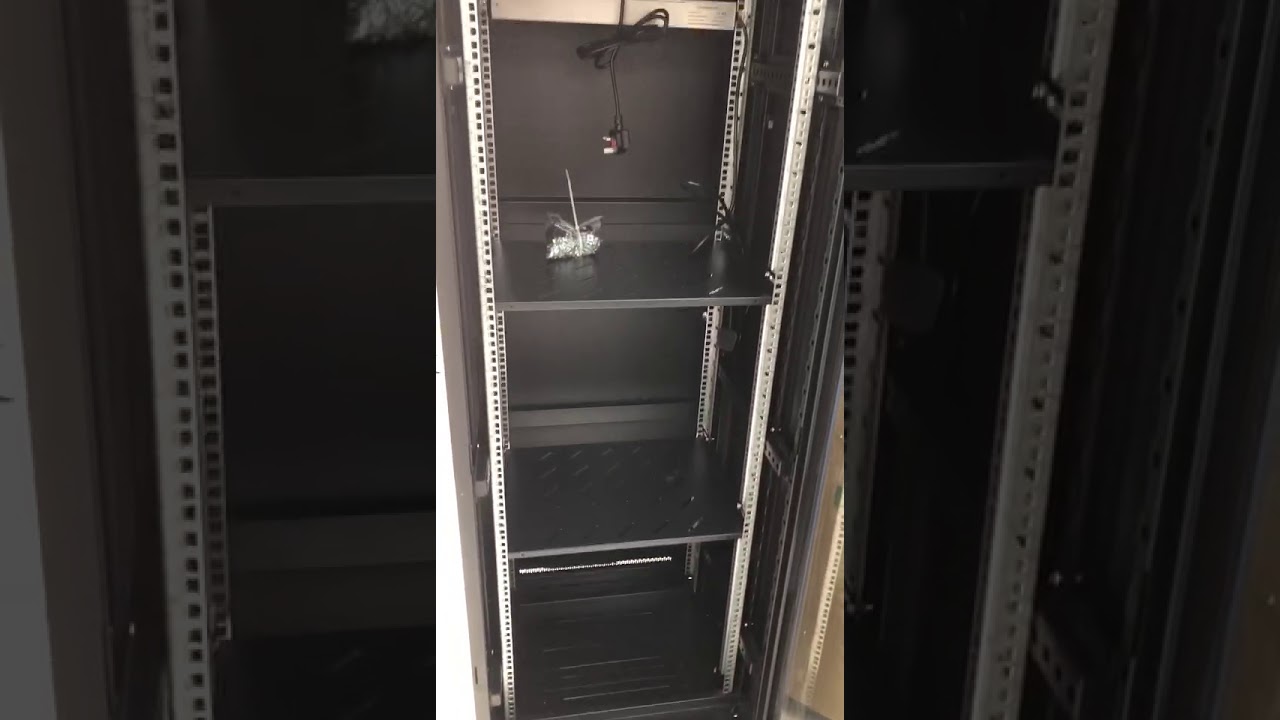
Bolein 32U 600mm*600mm free-standing DDF network rack enclosure server cabinet can be used in data centers, monitoring rooms, CCTV, and other places.
The front toughened glass door with a spring lock, side panels are removable, steel rear door with a round lock.
Assembled frame structure.
Cable entry and ventilation hole on top cover and bottom panel.
The main material is SPCC cold-rolled steel.
Mounting profile thickness is 2.0mm, mounting angle thickness is 1.5mm, others thickness is 1.2mm.
The degree of protection is IP20 and it can be customized.
Standard static loading capacity is 800 KG, and it can be increased to 1000 KG by adding auxiliary
mounting angle if need.
Adjustable feet and heavy-duty casters.
Cable manager, cooling fan, fixed shelf, sliding tray, patch panel, and other rack accessories are available.
If you are interested in it, you can contact us. We are also able to provide you the OEM racks.
Whatsapp: +8613467017439; Mobile/Wechat : +8617854120882; Skype: live:brenda123456fanhua; Email: sales3_cd@bolein.net; Site: www.bolein.net; bolein.en.alibaba.com
source
Technology
ByteDance will use Huawei’s chips to train its AI
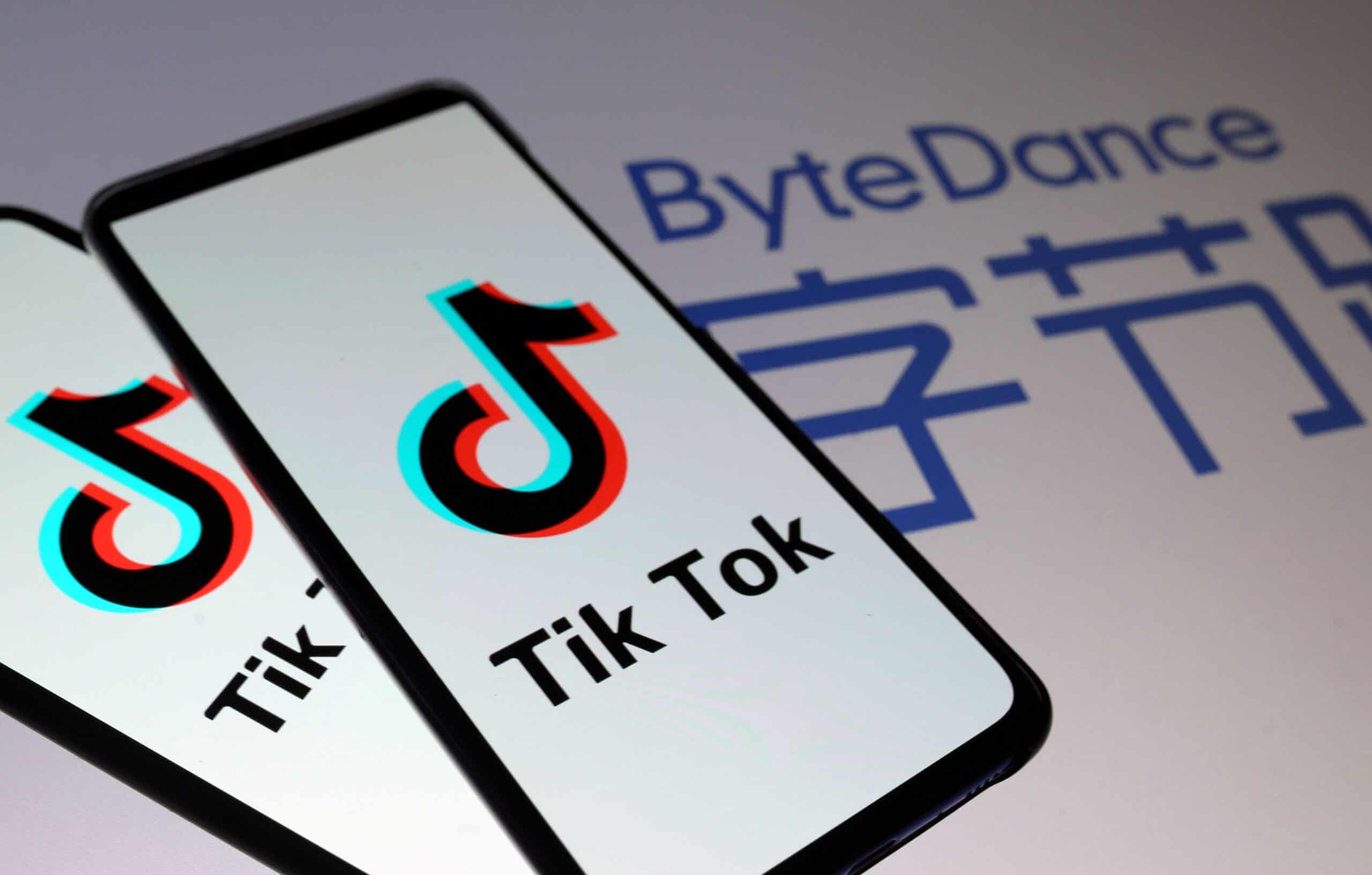
ByteDance, the owner of TikTok, is reportedly training its AI on chips developed and built by Huawei Technologies. Both Chinese companies could be trying to build regional AI capabilities and counter US trade restrictions.
ByteDance to rely on Huawei for AI-optimized hardware
Generative Artificial Intelligence (Gen AI) has become mandatory for every tech company. Companies like Google, Microsoft, Meta, Apple, X (formerly Twitter), and several others have Gen AI platforms. Not to be left behind, ByteDance too has built and deployed a few AI platforms.
AI models have powerful pattern recognition and they can help make decisions or predictions based on large data sets. Hence, AI platforms are now common in gaming, e-commerce, social media, and many other sectors.
It is, however, important to point out that most of these AI platforms have tailor-made AI models. But, they all need AI-optimized chips that are capable of digesting a lot of data.
According to Reuters, two Chinese companies are collaborating to develop and improve a custom AI model. Specifically speaking, ByteDance, the Chinese parent company of TikTok, is sourcing chips from Huawei Technologies.
Which Huawei chips will ByteDance source to train its AI?
According to Engadget, ByteDance’s AI projects used NVIDIA’s H20 AI chips. However, owing to geopolitics, ByteDance and other Chinese companies, have restricted access to American software and hardware.
To completely avoid trade restrictions, ByteDance could be sourcing AI chips from Huawei. Additionally, by approaching a Chinese company, the TikTok owner can source newer chips with better and faster processing capabilities.
ByteDance has reportedly ordered 100,000 Ascend 910B chips from Huawei this year. Although the company hasn’t made any official announcement yet, ByteDance has received 30,000 chips from Huawei so far.
Multiple reports suggest Huawei’s Ascend 910B chips are superior to NVIDIA’s A100 chips. Interestingly, these reports stress the Chinese company’s chips outperform NVIDIA’s chips in GPU performance and computing power efficiency.
ByteDance has an AI chatbot called Doubao, an AI text-to-video tool Jimeng, and an AI photo- and video-editing app named FaceU. The latest chips from Huawei could help improve these products. With more than 10 million monthly active users, Doubao has become one of China’s most popular apps within weeks of its launch.
Technology
GM’s Cruise fined $1.5 million for omitting details about its gruesome 2023 crash
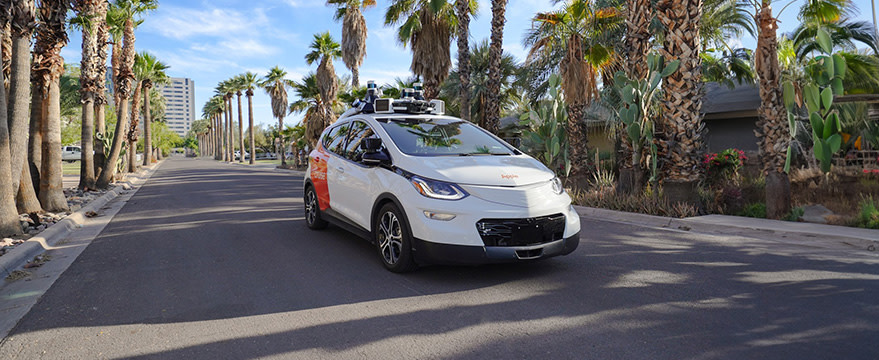
On Monday, the National Highway Traffic Safety Administration (NHTSA) fined Cruise, GM’s self-driving vehicle division, $1.5 million. The penalty was imposed for omitting key details from an October 2023 accident in which one of the company’s autonomous vehicles struck and dragged a San Francisco pedestrian.
Cruise is being fined for initially submitting several incomplete reports. The NHTSA’s reports require pre-crash, crash and post-crash details, which the company gave to the agency without a critical detail: that the pedestrian was dragged by the vehicle for 20 feet at around 7 MPH, causing severe injuries. Eventually, the company released a 100-page report from a law firm detailing its failures surrounding the accident.
That report states that Cruise executives initially played a video of the accident during October 3 meetings with the San Francisco Mayor’s Office, NHTSA, DMV and other officials. However, the video stream was “hampered by internet connectivity issues” that concealed the part where the vehicle dragged the victim. Executives, who the report stated knew about the dragging, also failed to verbally mention that crucial detail in the initial meetings because they wanted to let “the video speak for itself.”
Investigators finally found out about the dragging after the NHTSA asked the company to submit the full video. The government agency says Cruise also amended four other incomplete crash reports involving its vehicles to add additional details.
The NHTSA’s new requirements for Cruise include submitting a corrective action plan, along with others covering its total number of vehicles, their miles traveled and whether they operated without a driver. It also has to summarize software updates that affect operation, report citations and observed violations of traffic laws and let the agency know how it will improve safety. Finally, Cruise will have to meet with the NHTSA quarterly to discuss the state of its operations while reviewing its reports and compliance.
The order lasts at least two years, and the NHTSA can extend it to a third year. Reuters reported on Monday that, despite the fine, the NHTSA’s investigation into whether Cruise is taking proper safety precautions to protect pedestrians is still open. Cruise still faces probes by the Department of Justice and the Securities and Exchange Commission.
To say the incident sparked shakeups at Cruise would be an understatement. The company halted its self-driving operations after the accident. Then, last November, the dominoes began to fall: Its CEO resigned, and GM said it would cut its Cruise investment by “hundreds of millions of dollars” and restructure its leadership. Nine more executives were dismissed in December.
Nonetheless, Cruise is trying to rebound under its new leadership. Vehicles with drivers returned to Arizona and Houston this year, and GM said it’s pouring an additional $850 million into it. Earlier this month, it began operating in California again, also with drivers — which, it’s safe to say, is a good thing.
-

 Womens Workouts1 week ago
Womens Workouts1 week ago3 Day Full Body Women’s Dumbbell Only Workout
-

 Technology2 weeks ago
Technology2 weeks agoWould-be reality TV contestants ‘not looking real’
-

 Science & Environment2 weeks ago
Science & Environment2 weeks ago‘Running of the bulls’ festival crowds move like charged particles
-

 News1 week ago
News1 week agoOur millionaire neighbour blocks us from using public footpath & screams at us in street.. it’s like living in a WARZONE – WordupNews
-

 Science & Environment2 weeks ago
Science & Environment2 weeks agoHow to wrap your mind around the real multiverse
-

 Science & Environment2 weeks ago
Science & Environment2 weeks agoHyperelastic gel is one of the stretchiest materials known to science
-

 Science & Environment2 weeks ago
Science & Environment2 weeks agoMaxwell’s demon charges quantum batteries inside of a quantum computer
-

 Science & Environment2 weeks ago
Science & Environment2 weeks agoSunlight-trapping device can generate temperatures over 1000°C
-

 Science & Environment2 weeks ago
Science & Environment2 weeks agoHow to unsnarl a tangle of threads, according to physics
-

 Science & Environment2 weeks ago
Science & Environment2 weeks agoLiquid crystals could improve quantum communication devices
-

 Science & Environment2 weeks ago
Science & Environment2 weeks agoPhysicists are grappling with their own reproducibility crisis
-

 Science & Environment2 weeks ago
Science & Environment2 weeks agoITER: Is the world’s biggest fusion experiment dead after new delay to 2035?
-

 News2 weeks ago
News2 weeks agoYou’re a Hypocrite, And So Am I
-

 Sport2 weeks ago
Sport2 weeks agoJoshua vs Dubois: Chris Eubank Jr says ‘AJ’ could beat Tyson Fury and any other heavyweight in the world
-

 Science & Environment2 weeks ago
Science & Environment2 weeks agoQuantum ‘supersolid’ matter stirred using magnets
-

 Science & Environment2 weeks ago
Science & Environment2 weeks agoWhy this is a golden age for life to thrive across the universe
-

 Science & Environment2 weeks ago
Science & Environment2 weeks agoQuantum forces used to automatically assemble tiny device
-

 Science & Environment2 weeks ago
Science & Environment2 weeks agoCaroline Ellison aims to duck prison sentence for role in FTX collapse
-

 Science & Environment2 weeks ago
Science & Environment2 weeks agoNuclear fusion experiment overcomes two key operating hurdles
-

 Science & Environment2 weeks ago
Science & Environment2 weeks agoLaser helps turn an electron into a coil of mass and charge
-

 News2 weeks ago
News2 weeks agoIsrael strikes Lebanese targets as Hizbollah chief warns of ‘red lines’ crossed
-

 Science & Environment2 weeks ago
Science & Environment2 weeks agoTime travel sci-fi novel is a rip-roaringly good thought experiment
-

 Science & Environment2 weeks ago
Science & Environment2 weeks agoNerve fibres in the brain could generate quantum entanglement
-

 CryptoCurrency2 weeks ago
CryptoCurrency2 weeks agoCardano founder to meet Argentina president Javier Milei
-

 Science & Environment1 week ago
Science & Environment1 week agoMeet the world's first female male model | 7.30
-

 Womens Workouts1 week ago
Womens Workouts1 week agoBest Exercises if You Want to Build a Great Physique
-

 CryptoCurrency2 weeks ago
CryptoCurrency2 weeks agoEthereum is a 'contrarian bet' into 2025, says Bitwise exec
-

 Science & Environment2 weeks ago
Science & Environment2 weeks agoWhy we need to invoke philosophy to judge bizarre concepts in science
-

 CryptoCurrency2 weeks ago
CryptoCurrency2 weeks agoDZ Bank partners with Boerse Stuttgart for crypto trading
-

 Womens Workouts1 week ago
Womens Workouts1 week agoEverything a Beginner Needs to Know About Squatting
-

 Womens Workouts1 week ago
Womens Workouts1 week ago3 Day Full Body Toning Workout for Women
-

 News2 weeks ago
News2 weeks agoBrian Tyree Henry on voicing young Megatron, his love for villain roles
-

 News2 weeks ago
News2 weeks ago▶️ Media Bias: How They Spin Attack on Hezbollah and Ignore the Reality
-

 Science & Environment2 weeks ago
Science & Environment2 weeks agoA slight curve helps rocks make the biggest splash
-

 Science & Environment2 weeks ago
Science & Environment2 weeks agoQuantum time travel: The experiment to ‘send a particle into the past’
-

 CryptoCurrency2 weeks ago
CryptoCurrency2 weeks agoBitcoin miners steamrolled after electricity thefts, exchange ‘closure’ scam: Asia Express
-

 CryptoCurrency2 weeks ago
CryptoCurrency2 weeks agoDorsey’s ‘marketplace of algorithms’ could fix social media… so why hasn’t it?
-

 CryptoCurrency2 weeks ago
CryptoCurrency2 weeks agoRedStone integrates first oracle price feeds on TON blockchain
-

 CryptoCurrency2 weeks ago
CryptoCurrency2 weeks agoBitcoin bulls target $64K BTC price hurdle as US stocks eye new record
-

 CryptoCurrency2 weeks ago
CryptoCurrency2 weeks agoBlockdaemon mulls 2026 IPO: Report
-

 CryptoCurrency2 weeks ago
CryptoCurrency2 weeks agoCoinbase’s cbBTC surges to third-largest wrapped BTC token in just one week
-

 News1 week ago
News1 week agoFour dead & 18 injured in horror mass shooting with victims ‘caught in crossfire’ as cops hunt multiple gunmen
-

 Travel7 days ago
Travel7 days agoDelta signs codeshare agreement with SAS
-

 Politics5 days ago
Politics5 days agoHope, finally? Keir Starmer’s first conference in power – podcast | News
-

 Sport2 weeks ago
Sport2 weeks agoUFC Edmonton fight card revealed, including Brandon Moreno vs. Amir Albazi headliner
-

 Science & Environment2 weeks ago
Science & Environment2 weeks agoA new kind of experiment at the Large Hadron Collider could unravel quantum reality
-

 Technology2 weeks ago
Technology2 weeks agoiPhone 15 Pro Max Camera Review: Depth and Reach
-

 Science & Environment2 weeks ago
Science & Environment2 weeks agoHow one theory ties together everything we know about the universe
-

 Science & Environment2 weeks ago
Science & Environment2 weeks agoBeing in two places at once could make a quantum battery charge faster
-

 CryptoCurrency2 weeks ago
CryptoCurrency2 weeks agoCrypto scammers orchestrate massive hack on X but barely made $8K
-

 Science & Environment2 weeks ago
Science & Environment2 weeks agoTiny magnet could help measure gravity on the quantum scale
-

 Science & Environment2 weeks ago
Science & Environment2 weeks agoFuture of fusion: How the UK’s JET reactor paved the way for ITER
-

 Science & Environment2 weeks ago
Science & Environment2 weeks agoHow do you recycle a nuclear fusion reactor? We’re about to find out
-

 CryptoCurrency2 weeks ago
CryptoCurrency2 weeks agoLow users, sex predators kill Korean metaverses, 3AC sues Terra: Asia Express
-

 CryptoCurrency2 weeks ago
CryptoCurrency2 weeks agoSEC asks court for four months to produce documents for Coinbase
-

 CryptoCurrency2 weeks ago
CryptoCurrency2 weeks ago‘No matter how bad it gets, there’s a lot going on with NFTs’: 24 Hours of Art, NFT Creator
-
Business2 weeks ago
How Labour donor’s largesse tarnished government’s squeaky clean image
-

 News2 weeks ago
News2 weeks agoBrian Tyree Henry on voicing young Megatron, his love for villain roles
-

 Womens Workouts1 week ago
Womens Workouts1 week agoHow Heat Affects Your Body During Exercise
-

 Womens Workouts1 week ago
Womens Workouts1 week agoKeep Your Goals on Track This Season
-

 News2 weeks ago
News2 weeks agoChurch same-sex split affecting bishop appointments
-

 Technology2 weeks ago
Technology2 weeks agoFivetran targets data security by adding Hybrid Deployment
-

 CryptoCurrency2 weeks ago
CryptoCurrency2 weeks ago$12.1M fraud suspect with ‘new face’ arrested, crypto scam boiler rooms busted: Asia Express
-

 Science & Environment2 weeks ago
Science & Environment2 weeks agoUK spurns European invitation to join ITER nuclear fusion project
-

 CryptoCurrency2 weeks ago
CryptoCurrency2 weeks agoDecentraland X account hacked, phishing scam targets MANA airdrop
-

 CryptoCurrency2 weeks ago
CryptoCurrency2 weeks agoCertiK Ventures discloses $45M investment plan to boost Web3
-

 CryptoCurrency2 weeks ago
CryptoCurrency2 weeks agoBeat crypto airdrop bots, Illuvium’s new features coming, PGA Tour Rise: Web3 Gamer
-

 CryptoCurrency2 weeks ago
CryptoCurrency2 weeks agoTelegram bot Banana Gun’s users drained of over $1.9M
-

 CryptoCurrency2 weeks ago
CryptoCurrency2 weeks ago‘Silly’ to shade Ethereum, the ‘Microsoft of blockchains’ — Bitwise exec
-

 CryptoCurrency2 weeks ago
CryptoCurrency2 weeks agoEthereum falls to new 42-month low vs. Bitcoin — Bottom or more pain ahead?
-
Business2 weeks ago
Thames Water seeks extension on debt terms to avoid renationalisation
-
Politics2 weeks ago
‘Appalling’ rows over Sue Gray must stop, senior ministers say | Sue Gray
-

 Science & Environment1 week ago
Science & Environment1 week agoCNN TÜRK – 🔴 Canlı Yayın ᴴᴰ – Canlı TV izle
-

 News1 week ago
News1 week agoWhy Is Everyone Excited About These Smart Insoles?
-

 Politics2 weeks ago
Politics2 weeks agoTrump says he will meet with Indian Prime Minister Narendra Modi next week
-

 Science & Environment2 weeks ago
Science & Environment2 weeks agoSingle atoms captured morphing into quantum waves in startling image
-

 Technology2 weeks ago
Technology2 weeks agoCan technology fix the ‘broken’ concert ticketing system?
-

 Science & Environment2 weeks ago
Science & Environment2 weeks agoHow Peter Higgs revealed the forces that hold the universe together
-

 Health & fitness2 weeks ago
Health & fitness2 weeks agoThe secret to a six pack – and how to keep your washboard abs in 2022
-

 CryptoCurrency2 weeks ago
CryptoCurrency2 weeks ago2 auditors miss $27M Penpie flaw, Pythia’s ‘claim rewards’ bug: Crypto-Sec
-

 CryptoCurrency2 weeks ago
CryptoCurrency2 weeks agoJourneys: Robby Yung on Animoca’s Web3 investments, TON and the Mocaverse
-

 CryptoCurrency2 weeks ago
CryptoCurrency2 weeks agoLouisiana takes first crypto payment over Bitcoin Lightning
-

 CryptoCurrency2 weeks ago
CryptoCurrency2 weeks ago‘Everything feels like it’s going to shit’: Peter McCormack reveals new podcast
-

 Science & Environment2 weeks ago
Science & Environment2 weeks agoA tale of two mysteries: ghostly neutrinos and the proton decay puzzle
-

 CryptoCurrency2 weeks ago
CryptoCurrency2 weeks agoSEC sues ‘fake’ crypto exchanges in first action on pig butchering scams
-

 CryptoCurrency2 weeks ago
CryptoCurrency2 weeks agoBitcoin price hits $62.6K as Fed 'crisis' move sparks US stocks warning
-

 CryptoCurrency2 weeks ago
CryptoCurrency2 weeks agoVonMises bought 60 CryptoPunks in a month before the price spiked: NFT Collector
-

 CryptoCurrency2 weeks ago
CryptoCurrency2 weeks agoVitalik tells Ethereum L2s ‘Stage 1 or GTFO’ — Who makes the cut?
-

 News2 weeks ago
News2 weeks agoBrian Tyree Henry on his love for playing villains ahead of “Transformers One” release
-

 News1 week ago
News1 week agoBangladesh Holds the World Accountable to Secure Climate Justice
-

 Womens Workouts1 week ago
Womens Workouts1 week agoWhich Squat Load Position is Right For You?
-

 TV1 week ago
TV1 week agoCNN TÜRK – 🔴 Canlı Yayın ᴴᴰ – Canlı TV izle
-

 Technology7 days ago
Technology7 days agoRobo-tuna reveals how foldable fins help the speedy fish manoeuvre
-

 Technology2 weeks ago
Technology2 weeks agoIs carbon capture an efficient way to tackle CO2?
-

 Science & Environment2 weeks ago
Science & Environment2 weeks agoThe physicist searching for quantum gravity in gravitational rainbows
-

 Fashion Models2 weeks ago
Fashion Models2 weeks agoMixte
-

 Politics2 weeks ago
Politics2 weeks agoLabour MP urges UK government to nationalise Grangemouth refinery
-

 Health & fitness2 weeks ago
Health & fitness2 weeks agoThe maps that could hold the secret to curing cancer
-

 CryptoCurrency2 weeks ago
CryptoCurrency2 weeks agoHelp! My parents are addicted to Pi Network crypto tapper
-

 CryptoCurrency2 weeks ago
CryptoCurrency2 weeks agoCZ and Binance face new lawsuit, RFK Jr suspends campaign, and more: Hodler’s Digest Aug. 18 – 24

You must be logged in to post a comment Login